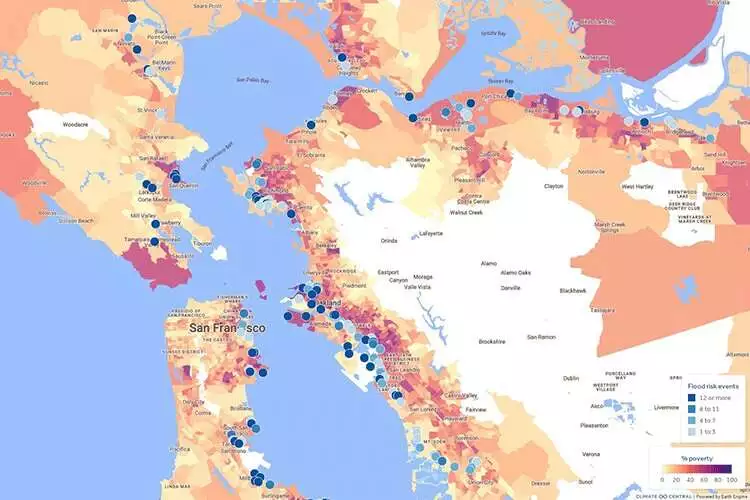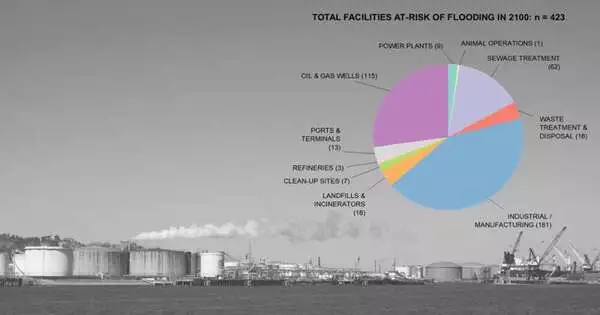According to a new study published today by researchers at UC Berkeley, UCLA, and Climate Central, the risk of flood-related contamination will disproportionately affect the state’s most marginalized communities as rising seas threaten to flood hundreds of toxic sites along the coast.
The study found 736 facilities at risk of coastal flooding and 173 with projected groundwater encroachment under California’s high-risk aversion scenario, which projects that sea levels could rise by more than 6 feet by the end of the century. People of color, people living below the poverty line, people without jobs, and people experiencing another social disadvantage like linguistic isolation were more likely than other residents to live within one kilometer of at-risk sites.
The researchers also released a brand-new interactive online tool in English and Spanish as part of the study. This tool lets users map toxic sites that are at risk of coastal flooding by county or facility. Indicators of social vulnerability, such as the proportion of people living below the poverty line, experiencing unemployment, or lacking a high school diploma, can also be overlayed by users.
“As California invests in community resilience to climate change, it is imperative that environmental justice considerations be at the forefront. Sea level rise is like a slow-moving storm that we can anticipate and prepare for.”
Rachel Morello-Frosch, a professor of public health and of environmental science, policy and management at UC Berkeley
Rachel Morello-Frosch, senior author of the paper and UC Berkeley professor of public health and environmental science, policy, and management, stated, “Sea level rise is like a slow-moving storm that we can anticipate and prepare for.” It is essential that environmental justice be prioritized as California invests in community resilience to climate change.”

a map created by the brand-new coastal risk screening tool, which can be found on the Climate Central website, of hazardous locations in the San Francisco Bay Area that are susceptible to coastal flooding. The level of poverty in the communities around you is shown by the colored overlay. Credit: Climate Central
Communities of color and those with low incomes already face a disproportionate amount of exposure to a variety of environmental pollutants, and the possibility of additional exposures as a result of rising sea levels will only serve to exacerbate these disparities. Socially vulnerable residents may also have more difficulty evacuating during a flood and frequently experience social stressors, making them more vulnerable to pollutant exposure’s negative effects on health.
By 2100, Orange County is expected to surpass San Mateo and Alameda counties as oil and gas wells there and in Los Angeles County face rising coastal flood risks. By 2050, San Mateo and Alameda counties are expected to host the most hazardous sites.
Lead author Lara Cushing, an assistant professor of environmental health sciences at the UCLA Fielding School of Public Health, stated, “Again, climate change amplifies inequality.” Ocean level ascent will introduce extra dangers of impurity deliveries to networks previously living with contamination sources in their lawns.”
As part of the Toxic Tides project, which brought together community advocacy groups and a multidisciplinary research team to learn how rising seas would affect hazardous sites like refineries, industrial facilities, sewage treatment plants, and cleanup sites, the study was carried out. In November 2021, the team made available an earlier version of the online mapping tool and a preliminary set of data. Additional analysis of the findings’ implications for environmental justice is included in the new study, which is published in the journal Environmental Science and Technology.
More information: Lara J. Cushing et al, Toxic Tides and Environmental Injustice: Social Vulnerability to Sea Level Rise and Flooding of Hazardous Sites in Coastal California, Environmental Science & Technology (2023). DOI: 10.1021/acs.est.2c07481





